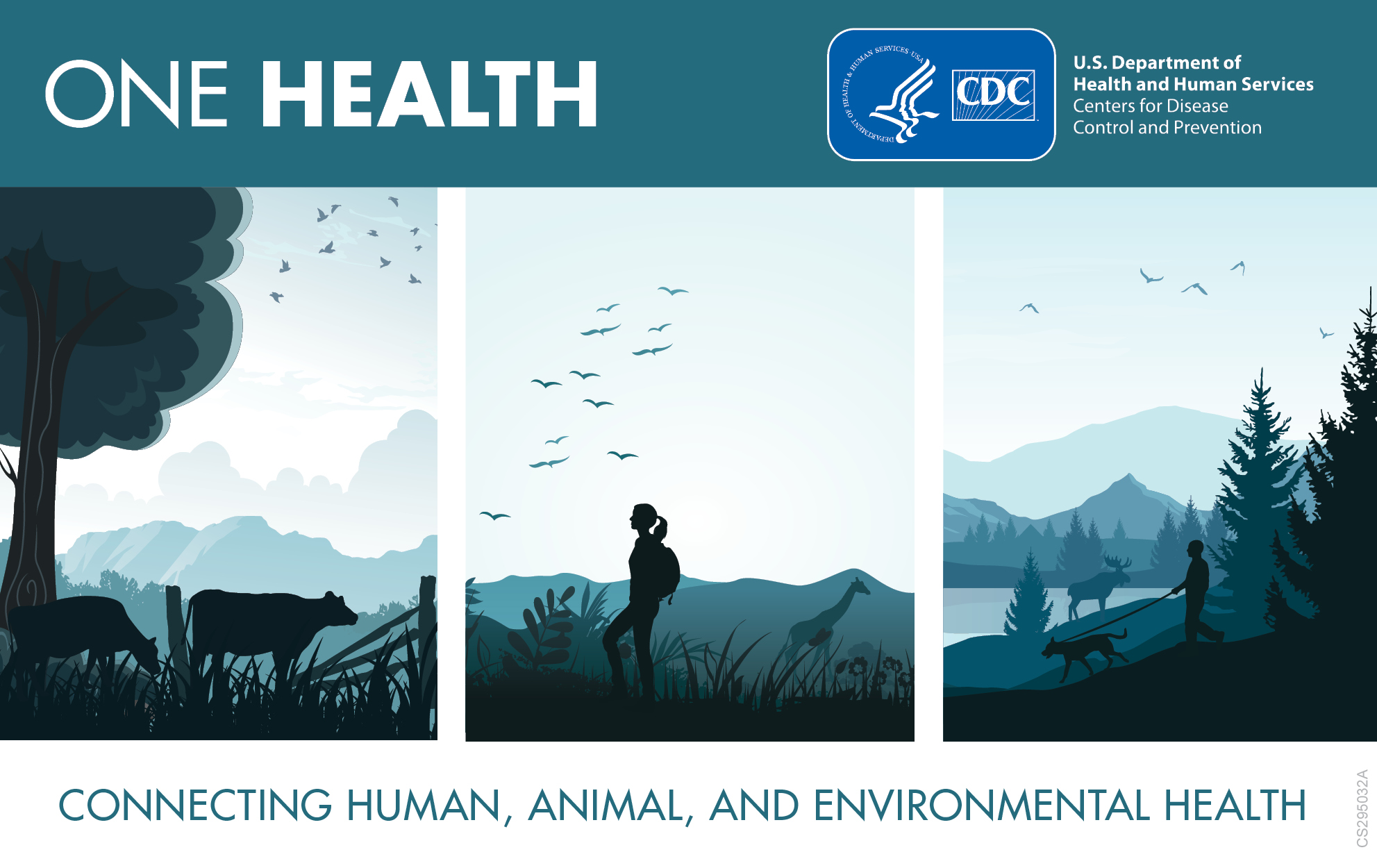
Celebrate One Health Day on November 3, 2019
November 3, 2019 is the fourth annual One Health Day, a global effort started by the CDC to bring attention to the necessity for a One Health approach to face shared health threats at the human-animal-environment interface.
The idea behind One Health is that the health of people is linked to the health of animals. According to the CDC, 6 out of 10 infectious diseases in humans are spread in animals, adding up to tens of thousands of diseases each year. This could be as simple as an E. Coli-infected cow grazing near a field of lettuce, or a mosquito carrying the West Nile virus biting someone. One Health Day is an opportunity to bring awareness to these issues by educating the community on what can be done to make our shared environment a healthier and safer one for all.
“One Health” has been a concept since the 1800s with scientists noting similar patterns and processes in diseases among animals and humans. Although this was recognized, until recently human and animal medicine was practiced separately until the 20th century (CDC). However, with the work that One Health has been doing, the goal of achieving “optimal health outcomes recognizing the interconnection between people, animals, plants and their shared environment” – is becoming a reality.
Listed below are just a few things that One Health is doing around the US, as well as globally, to educate the community on the risk at hand, and what can be done to prevent it:
What The One Health Office Is Doing In The U.S.
- Working with multiple partners to educate rural youth in agricultural organizations like 4-H and the Future Farmers of America about preventing the spread of diseases shared between people and animals like zoonotic influenza viruses. These newly formed One Health teams have reached thousands of young people and their families in states across rural America.
- One important outcome was the rapid response to an outbreak of flu in people who had attended agricultural fairs in Ohio and Michigan. These new One Health teams helped pinpoint the source of the illness—infected swine exhibited at the fairs.
- Responding to outbreaks and public health emergencies, such as examining the risk of Ebola and Zika viruses to pets and other animals.
- Protecting Americans by preventing diseases they can get from their pets like Salmonella infection and rat-bite fever.
- Due to an increasing number of outbreaks, the One Health Office is leading the Zoonoses Education Coalition. This public-private partnership is developing evidence-based recommendations to prevent diseases for pet owners, breeders, and stores.
- These recommendations were used during an outbreak of the Seoul virus that was spread to people by pet rats.
- The One Health Office shares tips about how to stay healthy while enjoying pets on CDC’s Healthy Pets, Healthy People website.
What The One Health Office Is Doing Around The World
Diseases can spread around the world very quickly, so it’s important for CDC’s One Health Office to work closely with other countries to build strong partnerships with human, animal, and environmental health organizations. This protects Americans from illnesses that cross borders and affect travelers.
Globally, the One Health Office is taking a strategic, targeted approach to control and prevent infectious diseases. For example, experts from the One Health Office lead One Health Zoonotic Disease Prioritization Workshops so that countries can focus limited resources on their top zoonotic diseases of greatest national concern. Zoonotic diseases commonly prioritized include viral hemorrhagic fevers such as Ebola virus and Rift Valley fever, zoonotic influenza viruses, rabies, and anthrax.
- Workshop participants include a wide-ranging group of people who protect the health—of people, animals, or the environment—and they identify a country’s top 5 diseases to target for One Health collaborations.
- Workshop participants develop strategies to tackle the newly prioritized zoonotic diseases. For example, having a dog vaccination campaign for rabies can lead to fewer human rabies deaths in a country.
- Prioritizing diseases means countries can more efficiently build lab capacity, conduct disease surveillance, plan outbreak response and preparedness activities, and create disease prevention strategies to reduce illness and death in people and animals.





